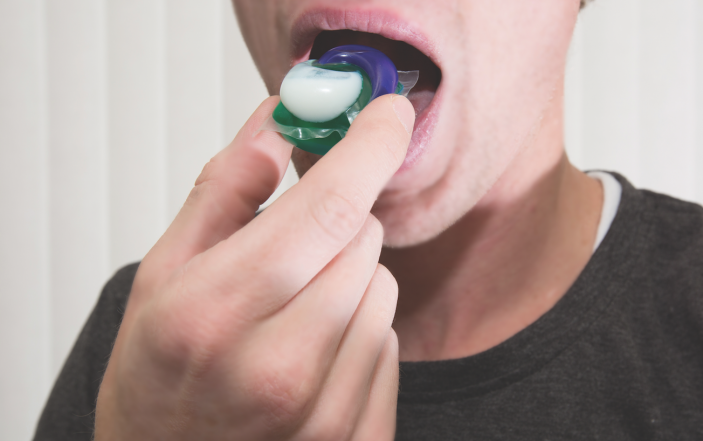Teenagers injesting detergent capsules is the latest in a string of ill-advised internet trends. Here’s what you need to know.
It’s been a busy evening shift. Gastroenteritis is widespread in the community, and you have seen so many vomiting children that you’ve lost count. You’re not surprised that the next chart in the rack is a 16 year old boy with emesis. Planning to execute your standard game plan of odansetron (zofran) followed by a trial of clears, you walk into the room.
I DARE YOU
This is not gastroenteritis. The drooling teenager before you tearfully admits that he and his friends had heard about the Tide Pod Challenge on social media and that he bit into a pod on a dare as his friends filmed it to upload to the internet. He began vomiting uncontrollably a few minutes after eating the pod and has been complaining of sore throat and abdominal pain.
The Tide Pod Challenge is the latest fad in “internet challenges,” consisting of teens and young adults videoing each other ingesting laundry detergent pods, either putting them directly into their mouths or even cooking them prior to ingestion.. Videos of teens biting into the detergent pods pop up on the internet almost as quickly as YouTube and Facebook can take them down.
Laundry detergent pods were introduced to the U.S. market in 2010. Within months, case reports began to appear about children experiencing severe illnesses after detergent pod ingestion. Studies in 2014 and 2016 published by the American Academy of Pediatrics found that children exposed to laundry detergent packets were significantly more likely to experience serious clinical effects, including coma, pulmonary edema, respiratory arrest, cardiac arrest, and hypotension, than children exposed to regular liquid detergent.
Laundry detergent pods have been blamed for eight pediatric deaths since 2012. Late effects, including esophageal strictures, are relatively rare but have been reported. In 2016 and 2017, poison control centers handled 39 and 53 cases of intentional exposures, respectively, among 13 to 19-year-olds. As of February 13, 2018 there have been 170 such exposures in the same age group.
TIDE PODS ARE CAUSTIC ALKALIS
Laundry detergent pods are included in the category of alkaline caustic ingestions. Alkaline agents typically cause mucosal injury if the pH is above 11.5 – 12.5. Laundry detergent isn’t usually that alkaline, but the more concentrated form in pods can be. Additionally, toxicologists at the University of Alabama found that the packets contain higher amounts of propylene glycol and alcohol ethoxylates. Metabolism of propylene glycol to lactate and acetate by the liver has been suggested to cause acidosis and altered mental status.
Alcohol ethoxylates are surfactants, which comprise 10-30% of the weight of Tide Pods but only 1-5% of Tide detergent. They have been associated with vomiting, diarrhea, lethargy, and increased work of breathing when ingested. Tide has taken steps to decrease accidental ingestions by making the outer membrane harder to puncture and introducing a bitter-tasting substance meant to cause young children to spit the pod out right away. These measures don’t seem to stop teenagers, however. How should patients with known or suspected caustic ingestion be managed in the emergency department?
Asymptomatic children with a history of ingestion (or possible ingestion) with a substance with low caustic properties can be orally challenged with clear liquids and observed in the emergency room for 2 to 4 hours, then discharged home if they remain without symptoms.
Children with mild to moderate symptoms or children known to have ingested severely caustic agents such as drain cleaner, should be admitted to a hospital to have an endoscopy performed within 24 hours. Oral burns may be absent even when significant esophageal injury is present. Attention should be paid to concurrent aspiration or ocular injury. Children with severe symptoms should have their airway secured with intubation.
CASE CONCLUSION
Your patient is symptomatic and thus meets criteria for admission and endoscopy. You admit the patient to the pediatric service for monitoring, supportive care. The following morning, endoscopy reveals only minor esophageal erythema, and he is discharged from the hospital after tolerating a regular diet.
Wondering what they will think of next, you wash your hands copiously with soap and water and move on to see more vomiting children with good-old fashioned gastroenteritis.










1 Comment
We should be afraid since this is the generation that is going to be taking care of us when we are old. Darwin’s theory in action.